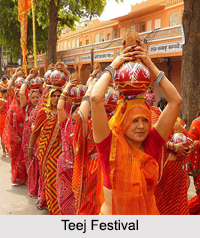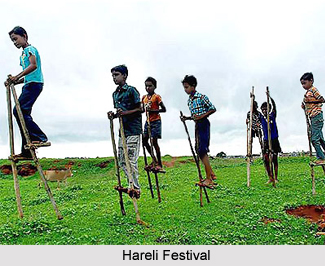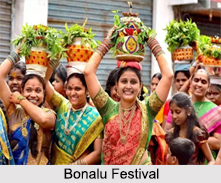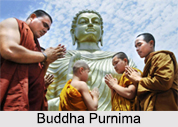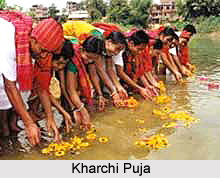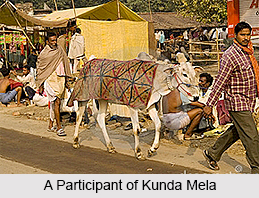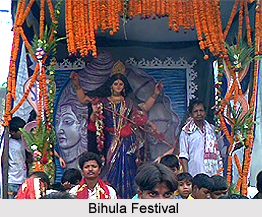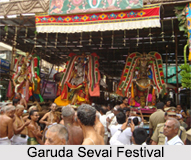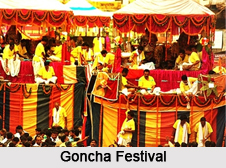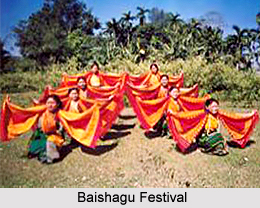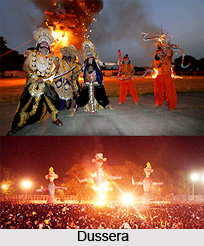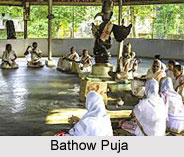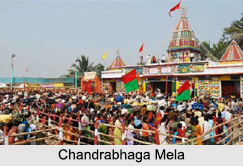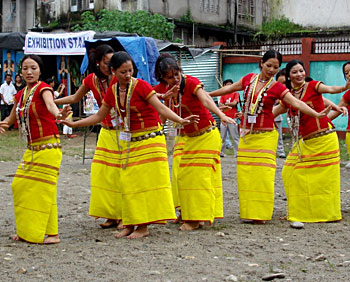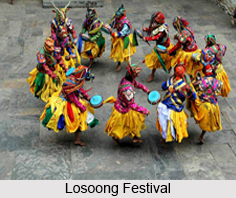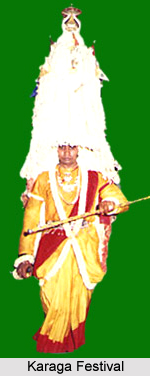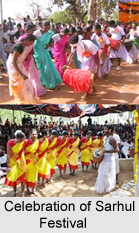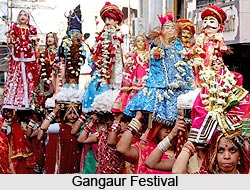Introduction
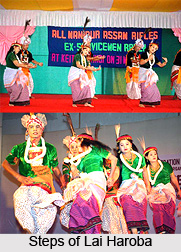 Lai Haroba is a folk dance of the Manipur state of India. This traditional dance depicts the creator and is also considered the precursor of Manipuri. This dance is performed to appease the gods. Since its inception, the dance was performed in the temples. Now these dances are staged and have become famous. There are almost more than 400 shrines depicting various animistic deities in Manipur. The Lai Haroba festival is celebrated in their honour each spring till the advent of monsoons.
Lai Haroba is a folk dance of the Manipur state of India. This traditional dance depicts the creator and is also considered the precursor of Manipuri. This dance is performed to appease the gods. Since its inception, the dance was performed in the temples. Now these dances are staged and have become famous. There are almost more than 400 shrines depicting various animistic deities in Manipur. The Lai Haroba festival is celebrated in their honour each spring till the advent of monsoons.
Origin of Lai Haroba
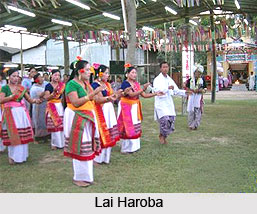 The origin of Lai Haroba dance can be attributed to a number of mythological instances. All Manipuri dances is said to be based on the physical movements of the great guru also regarded as the Creator, Sidaba. Later Sidaba and his consort Leimaren completed his creation of the Universe. Later on other gods and goddesses adapted the dance pattern for worshipping the great Guru. Gradually the dance was transmitted to the upcoming generations.
The origin of Lai Haroba dance can be attributed to a number of mythological instances. All Manipuri dances is said to be based on the physical movements of the great guru also regarded as the Creator, Sidaba. Later Sidaba and his consort Leimaren completed his creation of the Universe. Later on other gods and goddesses adapted the dance pattern for worshipping the great Guru. Gradually the dance was transmitted to the upcoming generations.
Another instance states that the Lai Haroba dance has originated from a Manipuri scripture Leithak Leikharole. According to the scripture the traditional dance of Manipur was Augri Hangel. In the scripture it is stated that the Great Guru had two sons named Kuptreng and Sentreng. The Guru declared that the first to succeed in going around the world would ascend to the royal throne. The elder son began his journey from the South. The younger son Sentreng while setting out for his journey was advised by his mother Leimaren Sidabi, to go round the throne of the Great Guru seven times. Sentreng did as he was advised and accomplished his task. His task illustrated his respect towards his father and as moving around the throne of the Creator signifies moving around the world he was crowned as the next king.
Kuptreng after his return when came to know about the Sentreng`s success was enraged. He immediately proceeded for a fight with him. Sentreng approached twelve nymphs created by the Great Guru who promised him protection. They formed a circle and took him inside it because of which Kuptreng could not see him. This dance in a circular fashion known as the Augri Hangel type of Manipuri dance was gradually handed down to the next generations. Later on he sensed the presence of his brother observing their chorus dance. Enraged he thrust his toe into the Earth to cause destruction. The Great Guru interfered and proclaimed that both the brothers would rule alternatively for twelve months.
We get another instance of the traditional Manipuri dancing from the Rasa Lila dancing of Lord Krishna and Radha. Once Lord Shiva and Parvati was in charge of the securing the gated of the pandal inside which Lord Krishna was engaged in performing the Rasa Dance.
The melodious tune in harmony with the jingling of the bells pleased Parvati. She became eager to witness it. When the request was not granted Shiv and Parvati decided it in another suitable place which was later known as Manipur. Here Shiv and Parvati performed their Ras along with many instruments like lute, `Pena`, and drum and others. Ananta (serpent king) also joined them in their dance.
Instances of Manipuri dance are also found in the episodes of Mahabharata. After the Ananta dynasty a new dynasty was formed which was headed by the Gandharva king. The king had a beautiful daughter. She was later married by Arjuna who was himself an artist par excellence. Arjuna had gained his knowledge of dance from the renowned dancer of Lord Indra`s court, Urvashi. These instances reveal the presence of dance among the inhabitants of Manipur.
Types of Lai Haroba Dance
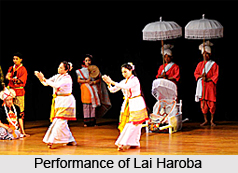 Lai Haroba is the most significant ritual festival of Manipur and is celebrated in honour of the gods and goddesses in various shrines. The dance of Lai Haroba depicts the tale of man, birth, youth, marriage, arts and learning. Performed during spring, Lai-Haroba portrays both nritta and abhinaya. The following are the twelve divisions of Lai Haroba:
Lai Haroba is the most significant ritual festival of Manipur and is celebrated in honour of the gods and goddesses in various shrines. The dance of Lai Haroba depicts the tale of man, birth, youth, marriage, arts and learning. Performed during spring, Lai-Haroba portrays both nritta and abhinaya. The following are the twelve divisions of Lai Haroba:
First type of Lai Haroba Dance
The very first type of performance known as Leikoba is performed by the male and female dancers. In it, they worship gods and invoke their souls to appear and take divine forms. This dance is performed on the very first day.
Second type of Lai Haroba Dance
The second type of dance known as Hailava depicts the joy and ecstasy of the Great Guru Sidaba during the time he began his creation.
Third type of Lai Haroba Dance
The third type of dance pattern is known as `Aman-Athou-Kofaya`. This form of dance is considered as an outburst of happiness of the male and female dancers who worship the god. The outbreak of happiness occurs upon witnessing the divine forms that result from the invocation of their souls.
Fourth type of Lai Haroba Dance
The fourth type of Lai Haroba dance depicts the Great Guru sending a goddess to a dangerous place during the time of creation. This part of the dance is performed by a female worshipper or dancer.
Fifth Part of the Lai Haroba Dance
The fifth part of the Lai Haroba dance is executed by a group of female dancers. This episode depicts Sidaba requesting his guru to create the Universe. His guru declines his wish as he considers himself to be incapable of doing so. This makes Sidaba angry.
Sixth type of Lai Haroba Dance
The sixth type is performed by a group of male dancers. This episode attaches some special and concrete form to Sidaba`s creation.
Seventh type of Lai Haroba
The seventh form of dancing is a form of humorous dance. It deals with the exchange of fun, pranks played and merry making among different gods and goddesses.
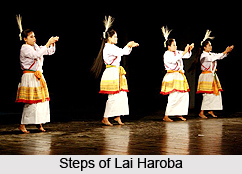 Eighth type of Lai Haroba Dance
Eighth type of Lai Haroba Dance
The eighth type of Lai Haroba dance is Herabo. This type of dance is considered as the most difficult and strenuous for the dancers to perform. Herabo dance is characterised by stylised techniques and intricate body movements. Even the movements of the hands and gestures are complicated. There is a general belief among the performers that if there is any slip in the movements while dancing then along with the performers the whole universe might get cursed by god. The Herabo dance is performed to commemorate the occasion when the Great Guru conceived the idea of his creation.
Ninth type of Lai Haroba Dance
The ninth type of Lai Haroba dancing is called as `Lebao`. In this form of dancing, the grace and beauty of an anatomical dancing body is portrayed. It is beautifully described by appropriate gestures, expressions and movements of the body.
Tenth type of Lai Haroba Dance
The tenth type of Lai Haroba dance is known as `Phangarel`. This episode exhibits a common man`s family life. A man when he enters into his daily routine life requires `Phanga` meaning fire. Hence with the help of fire, a man as a social being is depicted in this particular type of dance.
Eleventh type of Lai Haroba Dance
The eleventh form of Lai Haroba dance is `Ugri (history) Hanjen` which depicts the history of mankind.
Twelfth type of Lai Haroba Dance
The twelfth and the finale form of Lai Haroba dance is called `Leren Mathek` meaning zig zag way of a snake. The gestures and movements in this type of dance resemble the zig zag movement of a snake.
The complete execution of the twelve parts of Lai Haroba dance takes about fifteen days to perform. There are few notable Karanas (body postures) of Lai Harobasuch as Loima Jagoi, Loitai Jagoi, Lenet Jagoi, Tekhen Jagoi, Moirarg Jagoi etc. Augri Hansel is also another type of Lai Haroba dance which is enacted as a popular folk-dance as Kekrekek and Tbabal Songbi, during the Doljatra.
Performance of Lai Haroba
The dances are performed in front of a temple in a given open space. The dance festival commences with bestowing of fruits and flowers to god. This is usually performed by the girls who are lead by the `Maibis`, priestess-oracles. Subsequently, the boys select their girl partners for dancing and entertainment. `Nandai Jogai`, a type of Lai Haroba depicts the division of the sky surrounding the Earth into two. Thus, this dance is illustrated by lifting of hands in the sky and dividing it. There are twelve types of Lai Haroba dance.
Lai Haroba is performed by both male and female dancers. They either perform solo or in duets. It is sometimes performed by a group of boys and girls or males and females in separate groups. Occasionally during a duet Lai Haroba performance, a male person sings the song and the other performers dance accordingly. The dance starts with the slow movements of the hands. It is followed by the rhythmic beating of the feet on the ground. Gradually the rhythm of the dance increases and at the end the dance concludes with the dancers bowing to the gods and to the spectators. They rest their palms on the ground and touch them with their heads.
Musical Instruments of Lai Haroba
The musical instruments play an important role in the Lai Haroba dance. The orchestra of Lai Haroba comprises of a big drum, big gongs, bamboo flutes, `Manjira` (small cymbals) and a `Pena`. Pena is a stringed instrument of Manipur. The instrument is made up of a coconut which is broken into two halves. A round piece of leather is glued on one of the dried half shell of the coconut. Then a link is fixed in the centre. A piece of bamboo or wood is attached to the shell having some strings which are made up of hairs of a horse"s tail. These are attached at both ends. Once the instrument is made it produces a `Sarangi` like effect.
Costume of Lai Haroba
The Lai Haroba costume known as Aharya is based on the designs of the Munipur. The dress patterns bear its reference to mythological customs of Manipur. The sari worn by them is a one piece long cloth which is tied at the waist. It has a dark green background with golden stripes and decorated borders. Along with the sari satin half sleeved blouse is also worn. The head dress worn during the Lai Haroba dance is made up of thick green velvet fur fabricated with golden ribbons. The females decorate them with attractive ornaments like necklaces, ear rings and bracelets. The long flowing hair that sways with the movement of the head adds charm to their looks. The male dancers do not wear an upper garment. Their dhotis are made up of a coloured silk cloth. They also decorate themselves with ornaments like necklaces, armlets and rings.
Before the advent of the Vaishnavism among the Manipuris, the Lai Haroba had a prominent place among them. It was an important custom to perform the dance during the worship of their guardian deities like Thangjing, Wangbaren, Maijing, Koubru and Pakhangba, the royal deity. The Lai Haroba dance technique was later manifested into the Khamba and Thoibi dance pattern.
